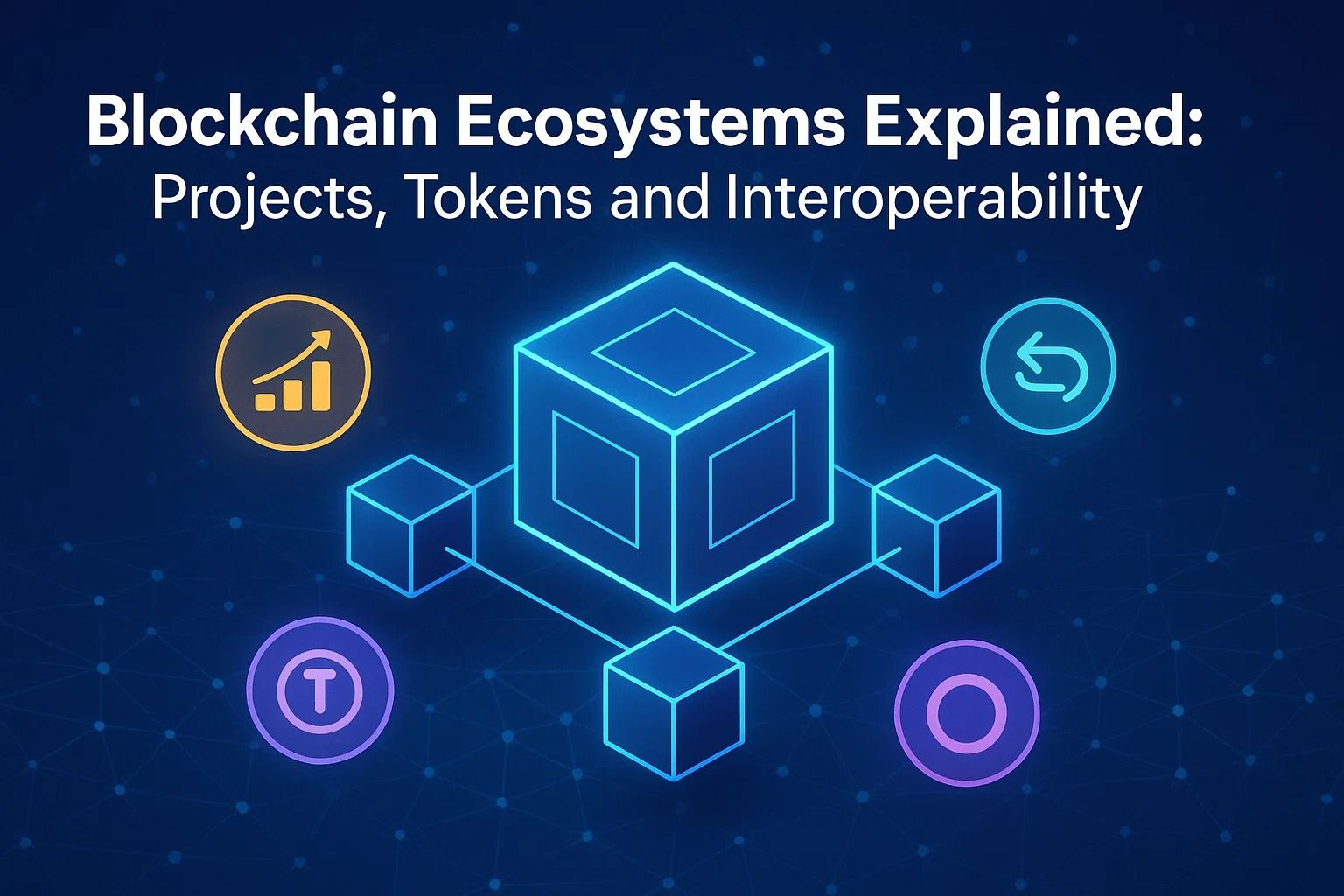
Blockchain Ecosystems Explained: Projects, Tokens and Interoperability
Blockchain Ecosystems Explained
The concept of a blockchain ecosystem references an array of projects, protocols, tokens, and communities that engage within a particular blockchain environment. Ecosystems transcend mere applications by operating as living systems, where developers, businesses, and users come together to create value. Each blockchain has its own specific infrastructure, governance model, and economic setup that determines how projects develop and function in harmony with each other.
Fundamental Elements of a Blockchain Ecosystem
- Projects – decentralized applications, DeFi platforms, NFT marketplaces, or enterprise solutions established on the network.
- Tokens – native cryptocurrencies and utility tokens that enable transactions, staking, and governance.
- Infrastructure – validators, nodes, and consensus mechanisms ensuring security and performance.
- Community – developers, investors, and users fostering adoption and innovation.
For instance, Ethereum has over time become one of the most dynamic ecosystems, powering thousands of decentralized applications and tokens. Compared to older incumbents like Ethereum, the emergence of new players like Solana, Polkadot, and multi-accounting strategies in crypto projects signifies how different ecosystems approach scalability and usability issues.
While the quest for adoption is common to all ecosystems, the trend is towards a future where ecosystems are not just solo players in the arena but are interchanging value and services, integrating blockchain data and services for superior user experiences.
Projects and Tokens that Shape Blockchain Ecosystems
At the core of each blockchain ecosystem are projects that demonstrate the technology’s real-life applications. They encompass everything from DeFi platforms that allow decentralized finance mechanisms, NFT ecosystems that bring new meaning to ownership of digital property, to Web3 infrastructure that enables users to trustlessly manage their identities, data storage, and beyond. Tokens are essential components that serve as the lifeblood of these applications, furnishing incentives for network participants and enabling collective governance.
Categories of Tokens
- Native Tokens – cryptocurrencies like ETH, SOL, and DOT that are used for transactions, gas fees, or staking.
- Utility Tokens – tokens that provide access to specific applications within decentralized applications (dApps).
- Stablecoins – tokens designed to maintain a regular value by being pegged to particular fiat currencies.
- Security Tokens – tokenized assets that stand in for physical assets like stocks or bonds.
Major Ecosystem Projects
- Ethereum – the leading platform that supports thousands of dApps as well as a broad array of DeFi products and NFTs.
- Solana – renowned for its high speed and low transaction fees, the Solana ecosystem primarily powers dApps ranging from games to Web3.
- Polkadot – designed for interoperability between numerous blockchains.
- Sui – an emerging ecosystem that allows decentralized physical infrastructure networks (DePIN) and next-gen scalability between validators.
Tokens are more than mere financial products; they create incentives, forge trustless systems, and empower various communities to govern their ecosystems collectively. For example, DeFi applications depend on tokens to facilitate liquidity, while NFT marketplaces utilize them to authenticate ownership of digital assets. Grasping the implications of these tokens is necessary when studying any blockchain ecosystem.
Interoperability and the Future of Blockchain Ecosystems
One of the biggest challenges of blockchain today is interoperability. With thousands of projects and hundreds of chains, how can decentralized networks talk to one another? Interoperability is vital for the long-term sustainability of Web3. Without it, users are stuck in silos, facing high fees, fragmented liquidity, and bad UX.
How Interoperability Works
- Bridges – technology that enables transferring tokens and data between different blockchains.
- Cross-chain Protocols – solutions like Cosmos IBC and Polkadot parachains that enable native inter-chain communications.
- Layer-0 networks – infrastructure projects that aim to connect chains at the protocol level.
Interoperability is not only a tech problem it is also a driver of adoption. DeFi, NFTs, and decentralized gaming are flourishing when assets can flow easily between ecosystems. Projects like Polkadot and Cosmos are pioneers in the field. But new chains like Sui open up innovation avenues for scalability and UX.
The future of blockchain ecosystems is creating a multi-chain world where users don’t have to know which blockchain they are on. Instead, the applications will abstract away the complexity, enabling seamless access to assets and services across different chains. With the development of interoperability, we can look forward to wider adoption, higher security, and a more inclusive Web3 economy.

















